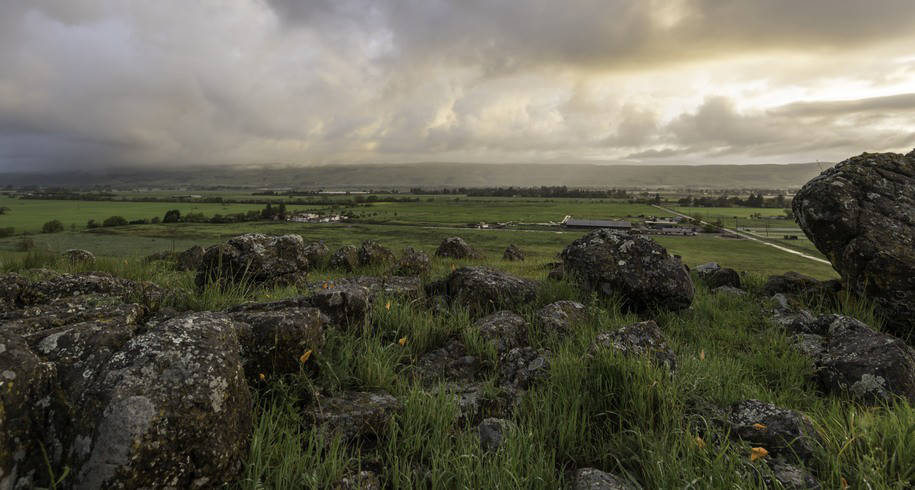Case Study: Coyote Valley

Unlocking conservation funding by discovering and communicating Coyote Valley’s multiple benefits
Planning problem
The Santa Clara Valley Open Space Authority is a public, independent special district that works to protect the quality of life in Santa Clara County by preserving open space and natural resources. In 2018, they faced an opportunity to partner with Peninsula Open Space Trust and the city of San José in a historic deal in North Coyote Valley, a rural expanse of farmland and open space on the city’s southern edges that had been threatened with industrial and warehouse development for decades. To complete the purchase from Silicon Valley developers and protect 937 acres of highly at-risk lands, the Open Space Authority needed to make the case for conservation and justify land acquisition as part of the City’s 2018 Measure T Infrastructure Bond.
How the Greenprint helped
The Open Space Authority had access to data focused on habitat for Coyote Valley and understood its unique importance as the primary landscape linkage between the Santa Cruz and Diablo Range Mountains. However, running the properties through the Greenprint, the Open Space Authority’s team was able to access supporting data representing a broader suite of values in order to fully understand these unique places, their attributes, and the multiple benefits of nature when various data were overlaid together. This included analyzing the general location, the watershed, critical linkages, riparian corridors, existing endangered or threatened species in the area, recreation, land uses like farmland production as well as biophysical features for climate resilience like groundwater recharge potential and the amount of natural flood protection available. A compelling story emerged about the importance of Coyote Valley serving not only as essential connectivity between the Santa Cruz Mountains and the Diablo Range, but as the last undeveloped natural floodplain providing multiple other benefits to people and nature. The Greenprint reports and summaries provided authoritative evidence of these insights the Open Space Authority’s team used to partner with organizations from other sectors, such as the local water agency and agriculture, and for use in grant proposals to the State Coastal Conservancy, Wildlife Conservation Board, and others. The data the Bay Area Greenprint revealed helped broaden the coalition of landowners and organizations that might have a stake in conserving a specific property, including many public agencies and environmental advocacy organizations. It helped to identify Coyote Valley as critical natural infrastructure for flood protection for the City of San José, and in turn, supported the City of San José’s inclusion of $50 million for land acquisition in Measure T, an infrastructure bond, that was ultimately approved by the voters in 2018. It also supported the recognition of Coyote Valley as “a resource of statewide significance subject to intense development pressure and in need of restoration, conservation, and enhancement” as identified in AB948, signed into law in 2019.
Regional impact
Conservation funding proposals were awarded allowing the Open Space Authority to bring $10M from the Wildlife Conservation Board and $5M from the Coastal Conservancy to this historic land deal. Using the Greenprint to access and articulate compelling data about Coyote Valley’s multiple benefits bolstered the Open Space Authority’s grant applications and the $50 million infrastructure bond investment and ultimately led to landmark protection of Coyote Valley that is now recognized as one of the great natural open spaces in the Bay Area with statewide and national significance. The unique open space preserve is protecting critical wildlife habitat, conserving open space, connecting people to nature and building a more climate resilient community for the greater San José area.
